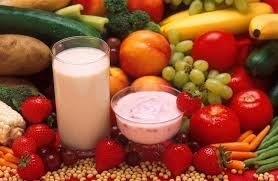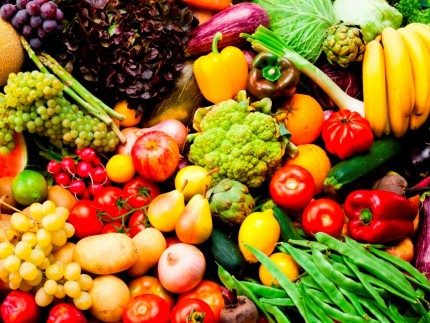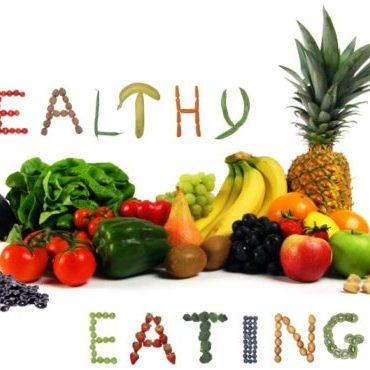Health advice from our resident nutritionist Arlene. Everything from dairy consumption, high cholesterol and the importance of a Glycemic Index.
 Why does low-fat dairy have more calcium?
Why does low-fat dairy have more calcium?
Low-fat dairy definitely does not have more calcium Contrary to popular belief, lowering the fat content in milk does not affect the calcium content, so an adequate calcium intake can still be obtained from lower-fat dairy products. However, low-fat milk contains less energy and lower amounts of fat-soluble vitamins and isn’t suitable for children under two years.
Can I prevent high cholesterol through diet if I have a family history?
Having high cholesterol levels increases your risk of developing atherosclerosis and having a heart attack or a stroke. Many cases of high cholesterol are influenced by lifestyle factors such as weight and diet. Your genes, however, also play a role in your blood cholesterol levels, and genetic conditions such as familial hypercholesterolemia can cause your cholesterol levels to be high. High blood cholesterol levels do not cause any symptoms until they result in atherosclerosis, a condition that makes arteries narrow and hard. Nonetheless, if you have multiple relatives who have high cholesterol levels or who have suffered a heart attack or stroke, you may have genetically high cholesterol levels. Another sign that your high cholesterol levels are caused by your genes is if your cholesterol is high early in life, particularly if you have normal body weight.
Your genes control the way that your organs function. Genetic causes of high cholesterol can result from mutations that occur in the LDL receptor, a protein that helps transport cholesterol out of the blood into organs, where it can be used to make bile, hormones and cell membranes. This kind of mutation causes your LDL or “bad” cholesterol levels to be chronically high,
High blood levels of lipids caused by genetic problems are called familial hyperlipidemias.
Although familial hyperlipidemias are caused by genetic defects, they are still treatable. Normally diet and exercise are not sufficient. Most patients will need to take medications, such as statins, fibrates and niacin, to improve their cholesterol levels and reduce their risk of developing cardiovascular disease. However, it is recommended to follow a healthy lifestyle, which includes maintaining a healthy weight and eating a diet low in saturated fat, trans fats and cholesterol. Regular exercise is also recommended
Choose Healthy Fats – eat more omega-3 Essential Fatty Acids — because our body does not manufacture them themselves. This is found in some vegetable oils like flaxseed oil and fish oils from oily fish like mackerel, salmon, herring, sardines and tuna. Omega-3 actually helps to improve blood fats like cholesterol. Switch to non-saturated fats and oils to lower your cholesterol (eg. monounsaturated or polyunsaturated fat from foods like fish, nuts, and vegetable oils). Saturated fat is found mainly in animal foods like meat and cheese, so go easy on meat/cheese and introduce more vegetarian meals into your weekly diet plan. In addition, beware of foods that contain “hydrogenated” or “partially hydrogenated” or “trans-fats”. For example, limit your consumption of shortenings, hard margarine, cakes, biscuits, crackers, snack foods, fried foods, doughnuts, pastries, baked goods, and other processed foods Hydrogenated or trans fats function like saturated fat. A high intake of saturated fat, hydrogenated or trans fat increases cholesterol and other lipid levels and may cause atherosclerosis. Eat Plenty Of Fruits And Vegetables. Fruit and veg are packed with valuable nutrients and contains a number of plant chemicals that are supposed to offer some protection again heart disease and cancer. Choose High Fibre, Low-GI Carbohydrates
Although eating a heart-friendly diet is an important step towards healthy cholesterol levels, anyone suffering from hypercholesterolemia, familial hypercholesterolemia or hypertriglyceridemia must consider the cholesterol-lowering benefits of physical exercise and take steps to follow a program of medically approved exercise. Maintain a healthy weight.
Quit smoking. Cigarettes and other forms of tobacco help to increase LDL levels (bad cholesterol), and depress HDL levels (good cholesterol). In fact, smoking massively increases the risk of heart attacks and strokes.
 Why is the Glycemic Index important?
Why is the Glycemic Index important?
The Glycemic Index (or GI for short) is a measure of how quickly your blood sugar rises after ingesting a carbohydrate. Basically, once you consume a carbohydrate and it gets digested it gets turned to glucose (blood sugar). Blood sugar is used by the body to manufacture ATP (Adenosine Tri-Phosphate), which is the molecule that the body uses to power up all of its functions. You can think of ATP as your body’s fuel, as without ATP, your organism would not be able to function.
The way that GI works is that each food is assigned a value, typically from 0-100, based on how fast blood sugar increases in the next two hours after consuming a carbohydrate. A value of 100 would represent food that increases blood sugar very rapidly, such as a straight glucose drink. A value of 59, like the one from brown rice, means that the blood sugar response is way more moderate. Therefore, for the purposes of blood sugar control and fat loss, brown rice is a much better choice than a glucose drink. Now, why is that?
How quickly a carbohydrate is turned into glucose and released in the bloodstream affects the amount of insulin that the pancreas will release to control blood sugar levels. Too quickly of conversion and your insulin levels skyrocket, a bad situation if you are trying to lose body fat since fat loss cannot occur in the presence of high insulin levels. Such a hormonal environment triggers fat storage. Therefore, it stands to reason that if a carbohydrate is released slowly into the bloodstream, then less insulin is released and thus fat loss is maximized.
So is controlling GI the main key to losing body fat? Yes and no. Understanding the effect of foods on your blood sugar is important as several studies have shown that eating low GI carbohydrates throughout the day suppresses the person’s appetite and provides more stable energy levels as blood sugar is better controlled (Note: sudden drops in blood sugar make you feel hungry and lethargic). In addition, eating low GI foods allows for more consumption of food without body fat storage and for a leaner you due to body fat loss.
 The harder I try to lose weight the more I put on – what do I do? The harder I try to lose weight the more I put on. I have a full-time job which makes me extremely tired and can’t be bothered attitude.
The harder I try to lose weight the more I put on – what do I do? The harder I try to lose weight the more I put on. I have a full-time job which makes me extremely tired and can’t be bothered attitude.
You have to be in a good frame of mind to lose weight. At the moment you sound so negative. You do not seem to be enjoying your job, and you seem extremely tired. Fatigue is one of the biggest stimuli for overeating. When you get control of your eating and start a regular exercise pattern you will feel more balanced and calm.
Weight loss is an overall process and there are no magic answers. Pay no attention to all the latest fads. You need to think about many factors but most of them are related to issues we’ve known about for a very long time. There are many sensible things you can do that will make a tremendous difference over the long term if you need to lose weight.
Keeping a food journal really does help. It will give you a much better sense of how much you are eating, and when, and why.
Make a few additional small changes – walk everywhere, always use stairs instead of elevators, walk on escalators, get up and move around at least once an hour if your work or your life, in general, is sedentary, walk every day, use a pedometer. Walking 10,000 steps a day is a really good idea. Build up to a long brisk walk every day, or most days. Be more active, watch less TV and spend less time on the computer.
It is a good idea to join a gym if you work long hours as they are open when it gets dark. Try and exercise for an hour each day. Walking is great if you enjoy being outdoors. It is a good idea to socialize while exercising as it is motivating – walk with a friend, go to Zumba are just a few ideas.
In terms of diet, cut out or reduce junk food, soft drinks, fat, fast food. Eat more fruit, vegetables, whole grains, lean meat, fish. You have to be organized so plan your meal. Do a good shop on the weekends so you have the correct food to eat on the weekends.
Reduce your portion sizes. Use a smaller plate – in our society, we have become accustomed to thinking that we need a large plate of food at every meal, and we don’t. About a quarter of your plate of food should be protein and at least half of it should be veggies.
Eat small amounts frequently, rather than three large meals. Never skip breakfast. Include some protein in your breakfast. It will help get you through the day.
Drink plenty of water, at least 8 big glasses of water a day, and more if it is very hot, if you sweat a lot, or if you are exercising intensely, and eliminate fruit juices. Fruit juices have too many calories, so get your vitamins from fresh fruit, not juice. You will begin to see changes in your body.
Exercise is good for your mood. Pick a time of day that you can manage to exercise and schedule this into your day.
An area that many people overlook is getting enough sleep. You are much more likely to overeat or to binge eat if you are tired and not well-rested, so get enough sleep.
When your eating, exercise, and sleep are in control you will feel happier and your life will be more balanced!
Can I have fruit juice if I have diabetes?
Fruit juice is not the ideal drink if you have diabetes as it has a high Glycaemic Index so will cause a rapid rise in blood sugar level. If you have a hypo you can have fruit juice. It is better to eat the fruit which has the fibre as well – this will lower the glycaemic index, consequently not causing such a rapid rise in blood sugars. If you choose to drink juice, be sure the label says it is 100% juice with no sugar added. Juice provides a lot of carbohydrates in a small portion, so be sure to count it in your meal plan. Usually, 120-180 ml (not even a full cup!) contains 15 grams of carbohydrate and 50 or more calories

